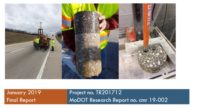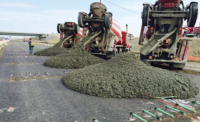A design guide for three short-span, heavy-load bridge applications using patented recycled-plastic components is now available, reflecting what officials say is an acceleration of industry interest in the material.
The guideline, released last month, aims to help engineers design bridges in the 10- to 15-ft, 16- to 20-ft and 21- to 25-ft-span ranges, says Vijay Chandra, the senior vice president with Parsons Brinckerhoff who led the three-month effort.
With the manuals, Axion International Holdings Inc., the manufacturer of the recycled-plastic bridge components, is striving to take its technology into the mainstream, says Dave Crane, Axion executive vice president. "We took a hard look at where the best fit for our bridges [is]. We decided vehicular bridges of 25 feet and less is where we want to really focus," he says.
Based on standard industry specifications, the "Standard Design Guide for Thermoplastic Bridges" provides technical considerations, including abutment details, waterproof membranes, overlay and connections when installing the plastic components.
Axion previously built two railroad bridges at Ft. Eustis, Va. (ENR 5/24/10 p. 24). The first highway bridge using the recycled plastic was built late last year in the town of York, Maine, using PB's design, says Dean Lessard, York public-works director. Along with the obvious environmental benefits, "what struck us most was the wood look," he says, noting it fit in with the historic nature of York. "It was a feel-good project."
Another 10 bridges in the U.S. alone are in the pipeline, says Crane, along with international interest. Chandra says the design components will continue to evolve. "For example, the I-girder is made up of two T-shapes. We'd like to see it be fabricated in one piece," he says. "We also want to increase girder depths so we can go to bigger spans."





Post a comment to this article
Report Abusive Comment